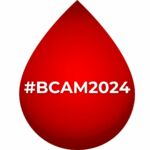Blood Clots in Orthopedic Surgery Fact Sheet
DVT and PE Prevalence
Deep vein thrombosis (DVT or blood clots in the leg or arm) and pulmonary embolism (PE or blood clots in the lung) are often under-diagnosed and serious, but preventable medical conditions.
It is estimated that up to 900,000 people in the United States are affected by blood clots each year, and that up to 100,000 Americans die each year due to a blood clot in the lung.
Ten to 30 percent of people affected by PE will die within one month of diagnosis.
In about 25 percent of people who experience a PE, the first symptom is sudden death.
Among people who have had a DVT, one-third will have long-term complications (post-thrombotic syndrome) such as swelling, pain, discoloration, and scaling in the affected limb.
One-third (about 33 percent) of people who are diagnosed with blood clots will have a recurrence within 10 years.
Blood Clots in Orthopedic Surgery Fact Sheet
In orthopedics, joint replacement surgery is becoming more common. Orthopedic surgeons performed about 520,000 hip replacements and about 581,000 knee replacements in 2006.
DVT is widely recognized as a major risk factor facing patients who undergo total hip arthroplasty (THA) and total knee arthroplasty (TKA).
Without prophylaxis (preventive treatment), up to 80 percent of orthopedic surgical patients will develop DVT, and 10 to 20 percent will develop PE.
Even when proper prevention measures are taken, it is estimated that 3 percent of orthopedic surgical patients will develop DVT, and 1.5 percent will develop PE.
DVT and PE remain the most common cause for emergency re-admission and death following joint replacement surgeries.
NBCA DVT and PE Awareness Survey
The NBCA DVT and PE Awareness Survey was conducted to:
- Document self-reported prophylaxis treatment among THA/TKA surgeons
- Measure THA/TKA surgeon perceptions about anticoagulant treatment barriers
- Benchmark DVT and PE awareness among THA/TKA patients
- Measure THA/TKA patient perceptions about anticoagulation barriers
The National Blood Clot Alliance conducted an online survey of 200 US orthopedic surgeons who perform hip and knee replacements. Mean procedure volume for these surgeons was 76 annually. For comparison, an online survey among 250 patients, over 20 years old (20 to 80 plus years old, the mean age being 54 years old; 55 percent female) who had undergone THA/TKA surgery within 12 months of sampling also was conducted.
The THA/TKA surgeon survey consisted of 67 questions along three different paths:
- General DVT prophylaxis preferences in THA/TKA
- Specific DVT prophylaxis practices/perceptions related to warfarin and low molecular weight heparin
- Information provision to THA/TKA patients/families
The THA/TKA patient survey consisted of 62 questions along four different paths:
- Awareness of DVT and PE
- Information received from healthcare professionals about DVT and PE
- Prophylaxis experiences related to DVT and PE
- Adherence to anticoagulation
Key Survey Findings among THA/TKA Surgeons: General DVT/PE Prophylaxis Preferences
99 percent of THA/TKA surgeons surveyed report routine use of DVT and PE prevention practices for most THA/TKA patients.
71 percent of surgeons surveyed prefer AAOS guidelines
Key Survey Findings Among THA/TKA Surgeons and Patients: Information Provision
97 percent of surgeons surveyed report they provide DVT risk information to THA/TKA patients all or most of the time.
THA/TKA patients say doctors and health care providers (HCPs) in orthopedics provide information about blood clot risk (80 percent) and consequences of blood clot formation (74 percent), but patient awareness is low.
Key Survey Findings Among THA/TKA Patients: DVT and PE Awareness
Among all THA/TKA patients surveyed, 71 percent and 79 percent had not heard of a condition called DVT or PE, respectively, when these specific terms were used.
While THA/TKA patients have a very low awareness of DVT and PE, the survey showed that most patients (77 percent) do know what a blood clot is, and virtually all respondents (97 percent) recognize that blood clots can be life threatening.
Key Survey Findings Among THA/TKA Patients: Information
When asked how they acquire medical information, the top responses were: from their doctor (84 percent), from the Internet (71 percent), from nurses (38 percent) and from family members (22 percent) and health advocacy organizations (22 percent).
Nearly two-thirds (63 percent) of THA/TKA patients said they did not receive additional information or referral to additional information from doctors or HCPs about blood clot risks related to THA/TKA surgery. Among the 39 percent of THA/TKA patients who did receive educational material or were referred to educational materials, brochures were most common among the materials they received. When asked to rate such materials, more than 80 percent of these same respondents cited CDs, DVDs, and Web sites as “very useful.”
Key Survey Findings Among THA/TKA Patients: Prophylaxis
Patient-reported experiences with prophylaxis varied widely: 83 percent ambulation, 74 percent compression stockings, 57 percent mechanical compression, 58 percent anticoagulant pill, 46 percent anticoagulant injection, 42 percent aspirin.
Risk Factors for DVT and PE Include:
High Risk
- Hospital Stay
- Major surgery, such as abdominal/pelvic surgery
- Knee or hip replacement
- Major trauma
- Nursing home living
- Leg paralysis
Moderate Risk
- Older than age 65
- Trips of more than four hours by plane, car, train or bus
- Active cancer, chemotherapy
- Bone fracture or cast
- Estrogen-based birth control pills, patch, or ring
- Hormone therapy
- Pregnancy or recently gave birth
- Prior blood clot or family history of a clot
- Heart failure
- Bed rest for more than three days
- Obesity
- Genetic/hereditary or acquired blood clotting disorder
Signs and Symptoms of DVT and PE Include:
Deep vein thrombosis (DVT or blood clot in the leg or arm)
- Swelling, usually in one leg
- Leg pain or tenderness
- Reddish or bluish skin discoloration
- Leg warm to touch
These symptoms of a blood clot may feel similar to a pulled muscle or a “Charlie horse,” but may differ in that the leg (or arm) may be swollen, slightly discolored, and warm.
Contact your doctor as soon as you can if you have these symptoms, because you may need treatment right away.
Pulmonary embolism (PE or blood clot in the lung)
- Sudden shortness of breath
- Chest pain-sharp, stabbing; may get worse with deep breath
- Rapid heart rate
- Unexplained cough, sometimes with bloody mucus
Call 9-1-1 immediately if you experience these symptoms.




